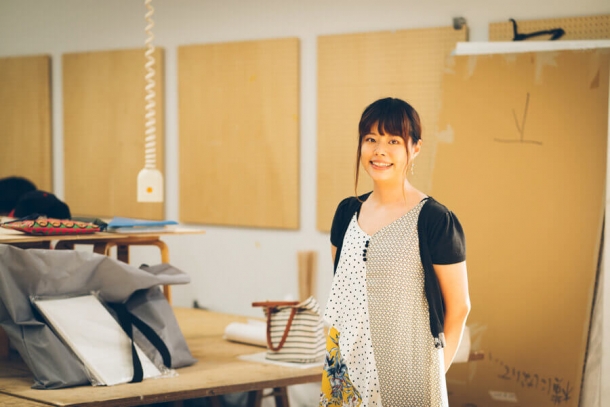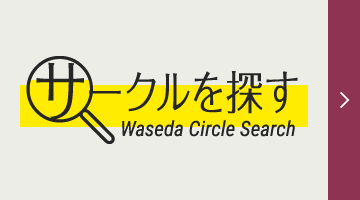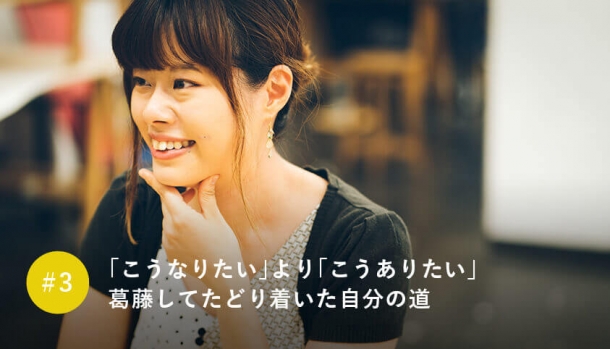
#3 The Conflict Between “What I Want to Be” and “How I Want to Be,” and Arriving at One’s Path
Q. Since 2017 you’ve worked as a banto (clerk) at Kosugiyu sento in Koenji. What have you learned during the two years you’ve worked there?
Enya
The best part about Kosugiyu is that it accepts your weaknesses. Back when I wasn’t good at design, I would often blame myself, thinking things like “why am I so bad at this?” and “I’m not trying hard enough.” But the atmosphere at Kosugiyu is completely different.
When I’m not feeling well or when I have difficulties communicating with others, I don’t feel I need to “try harder”; instead, I think about how I can make the most out of my abilities. I don’t deny that I can’t do certain things. I accept that and developing the things I can do.
This is the guiding principle of Kosugiyu, but I also think it captures the essence of sento.
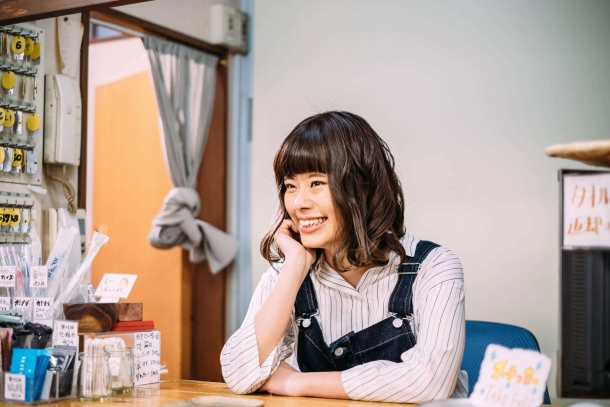
Caption: Enya in her post as clerk at Kosugiyu (photo by Gota Shinohara)
Sento accepts people and doesn’t push them. When people enter a bath, they don’t know each others’ names, nor do they know what others do on a daily basis. Everyone is naked and on an even playing field; you’re not aware of your weaknesses at all. This calming acceptance of one’s weaknesses can be found at sento.
Q. Would you say that, as a clerk, you also accept people’s weaknesses?
Enya
I’ve changed my way of thinking since being welcomed by sento. There are customers who are tired and come to Kosugiyu every day. I work in hopes of keeping Kosugiyu, and sento, a place that welcomes those who feel weakened.
Q. Sento’s allures encompass both the physical relaxation of a bath as well as the psychological effect of feeling accepted. This year marks your third year working at Kosugiyu. Have there been changes in the number, or types, of customers?
Enya
There are more and more younger people, and sales have improved considerably. We recently started “morning baths” from 8 a.m. on Sundays. We generally get around 600 to 700 customers on weekends, but with the new morning baths, we now get around 1,000.
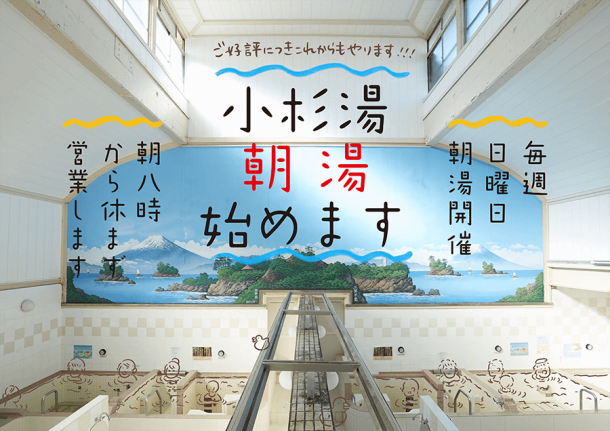
Caption: Notice advertising Kosugiyu’s morning baths, created by Enya
Q. I generally hear that sento aren’t doing well financially, but Kosugiyu is bustling. In addition to your sento illustrations, you’re also organizing a sento revitalization project. Is it because sento helped you in a time of need that you want to give back?
Enya
The sento industry faces a number of issues that are setting it on a path of decline, including the lack of successors and a decrease in customers. Of course I want to revitalize sento that are facing such circumstances.
But I’m not doing these things because I feel I need to give back; I’m just doing what I love, and I think my activities are just an expression of my love for sento.
I do want to share my love for sento, though, and I’ll be delighted if that creates a positive effect. That’s how I’ve felt ever since I decided to share my appreciation for sento with friends via Twitter.
Q. After many twists and turns since your time at university, you’ve finally found where you belong: sento.
Enya
I feel like I’ve just started! I want students reading this article to know that you don’t need to follow a straightforward career. As a student, I only heard stories about older students succeeded in design or as general contractors. I never heard stories about those like me, who found their own path after a series of conflicts.
When I was working at the design office, I had a single-minded focus on what I needed to do to become an architect. However, now as a clerk and illustrator, I’m much more focused on the present, which I feel is guiding me towards the future.
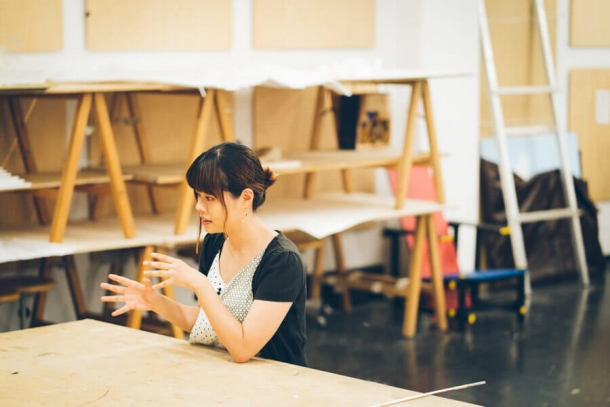
I don’t feel troubled at all, and every day is fun. It’s more about “how I want to be” rather than “what I want to be.” When I was a student, nobody told me that lifestyle was possible.
The many twists and turns make it difficult to explain my career, but I feel like the current me would be able to instill some courage in the student me. I was so concerned about find finding the right job and being perfect back then. The current me, on the other hand, took the hand I was dealt and made it work. If I have the opportunity, I’d like to give a talk to students to explain there are people out there like me.
Q. Will you continue drawing sento?
Enya
Yes. There are public bathing areas around the world. When I went to Finland, I learned that, due to the proliferation of home saunas, public saunas are disappearing, similar to sento in Japan. I think it would be fun to draw the various bathing facilities that exist around the world.
In addition to sento, I also want to draw all types of cities and architecture. I’ve been tormented by the notion of “drawing and architecture,” but publishing Sento Illustrations has given me a sense of self-realization in terms of how I want to draw.
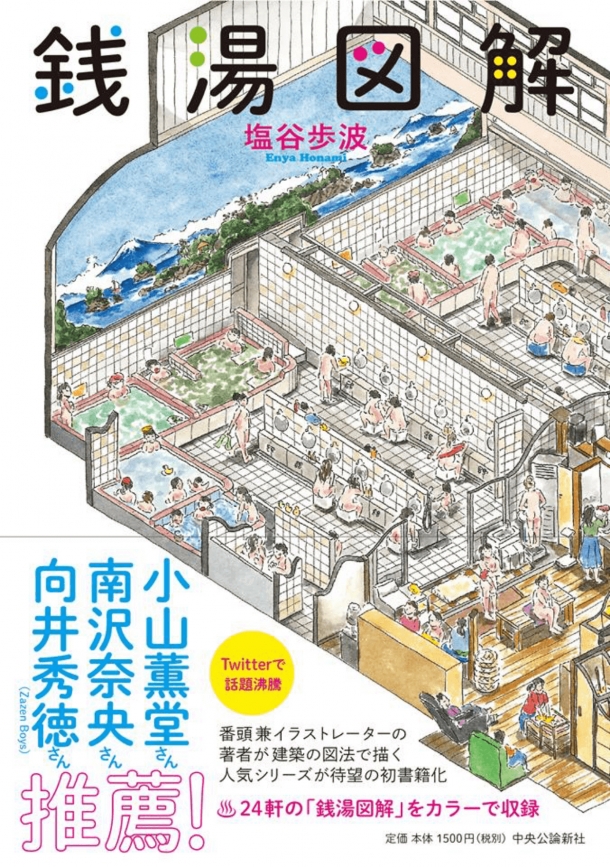
caption: Published in February 2019 by Chuokoron-Shinsha, Enya’s book Sento Zukai (Sento Illustrations) includes color illustrations of 24 sento primarily located in the metropolitan area.
What I want to draw most is the drinking district of Koenji, where I live. I’d like to live as an artist, cherishing moments that inspire me to draw.
